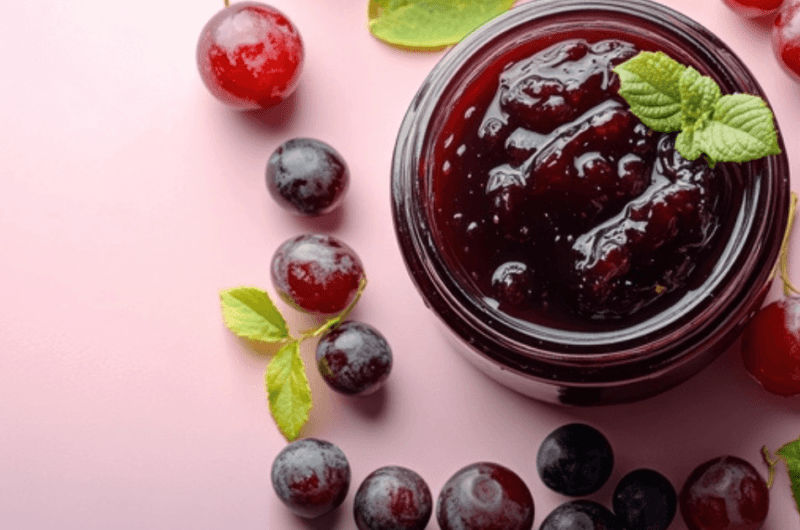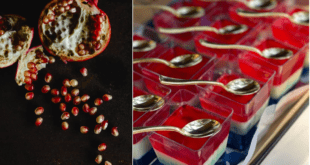Making a ball grape jelly recipe adds a creative, flavorful twist to culinary adventures. Grape jelly with its sweet and slightly tart flavor is an indispensable delight in the kitchen because manifold used with many things. Be it on toast for that comforting breakfast or as a glaze to savory meats, grape jelly yields a unique flavor, with a depth of love, be it on the sweet or savory palates. This book will take you in preparation for making the Ball grape jelly on your own, for you to get to enjoy the pleasing fruits of your labor in the preservation and fine-tuning of your art of canning. Let’s dive into homemade grape jelly and unlock its culinary possibilities.
Jump to RecipeBenefits of making grape jelly

Control over Ingredients and Customization
The greatest advantage in making grape jelly at home is the fact that one will be able to exercise control over the kind of ingredients used in its preparation. One can select fresh and good quality grapes, while the sweetness or level of sugar can vary according to taste. Besides, a Flavor of Choice may be added, for instance, a hint of citrus or spices, to make grape jelly taste the best.
Cost-Effective
For sure, home-making grape jelly can prove a great and cost-effective alternative to the sometimes costly store-purchased types, mostly when made from seasonal or locally available ones. This means you get to reap the satisfaction of producing a delicious product from surplus or discounted grapes while saving on food wastage and cutting your grocery expenses in the long run.
Preserving Seasonal Fruits
Making grape jelly could also help save the fresh flavors of seasonal fruits; one might be able to get the essence of ripe, fresh, and in-season grapes. That way, the possibility is very much open for you to enjoy the taste of summer all year long. This will ensure, not only that you do not run out of homemade grape jelly, but that you enjoy nature’s best at that particular season.
Nutritional Control
Homemade grape jelly allows you to avoid artificial additives, excessive sugars, and preservatives commonly found in commercial products. You can sweeten and make it more nutritious, perhaps from a much healthier version than that of the stores—a necessary balance for meeting your dietary needs.
You enjoy not just the taste of empowerment over ingredients and flavors but also the taste of how it feels to save money and be sustainable by preserving seasonal fruits.
Choosing the Right Grapes for Ball Grape Jelly Recipe
While selecting grapes for the preparation of grape jelly, character and flavors of many grape varieties should be considered that the taste and required texture can be obtained. The categorization below gives how to select the right grapes and their suitability in the preparation of the jellies.
Grape Varieties and Flavor Profiles

Concord Grapes: They are deep purple grapes and the source of choice when it comes to making grape jelly, for the bold sweet-tart flavor and natural richness. Concord grapes have a robust grape flavor, best known to them. They are perfect for making full-bodied, old-style grape jelly.
Catawba grapes give a very light fruity taste and a light aroma—totally different from the sweetest Concord grapes. They make an incomparable grape jelly—light and full of flavor, unlike any other grape jelly.

Seedless Grapes: The best convenience would certainly be reached with a seedless grape variety—red or green Thompson seedless grapes, or any other kind. Of course, with the development of seedless types, mild flavors, and crispy textures to make a smoother, less pulpy grape jelly, many people enjoy it.

Muscat Grapes: This is one of the most popular types of grapes; these have a strong, characteristic, floral musky smell, so it will certainly increase the fragrance in the jelly. Exotic and aromatic in character, the grapes are from the comfort of your home; they are for those tasters who like their food a little bit out of the ordinary.
Importance of Selection
The chosen variety of grapes has great importance in deciding the overall taste, color, and textural features of the grape jelly. From the different types of grapes, their level of sweetness, tartness, and aroma was found to differ; thus, this allows proper customization according to personal preferences and, if any, per the requirements of the recipe. In addition, the grape’s natural pectin content can affect the jelly’s setting ability, texture, and consistency.
Grapes for jelly-making
The selection of ripe, good-flavored grapes free from any spoilage or mold is usually the first step in jelly-making. Brighter-colored and plumper grapes will result in a richer jelly with the juice of the grape cooked to perfection.
Ball Grape Jelly Recipe–Ingredients

1. Fresh Grapes: Select high-quality grapes of your preferred variety, ensuring they are ripe and free from spoilage.
2. Granulated Sugar: Used to sweeten the grape jelly and aid in the jelly-setting process.
3. Ball Pectin: The firm makes a delivery of pectin, which is essential in the formation of the needed consistency of gel in the preparation of grape jelly at home.
4. Lemon Juice: Adds a hint of acidity to balance the sweetness and enhances the natural flavor of the grapes.
5. Water: Used for cooking the grapes and extracting their juices.
Equipment
- Canning Jars
- Canning Lids and Bands
- Canning pot or water bath canner
- Canning Funnel
- Large Pot or Saucepan
- Jar Lifter
- Bubble Remover and Headspace Tool
- Kitchen Towels and Mitts
- Timer and Thermometer
Importance of Proper Canning Equipment- Grape Jelly Recipes

Proper canning equipment should be used so that the product of homemade grape jelly is safe, of quality, and lasts for a long preservation duration. Well, according to equipment—sterile jars and lids—a right seal will be produced, and this will prevent contamination by microorganisms and, therefore, spoilage. Moreover, grape jelly was well-preserved with the right timing and temperature being followed during the period of canning, ensuring that the flavor and texture of the jelly were perfectly retained.
Your adventure in developing Ball Grape Jelly will be made with all the right ingredients and equipment, ensuring every measure in safety and shelf-stability is guaranteed as you create delicious Ball Grape Jelly.
Ball Grape Jelly Recipe-Step-by-Step Instructions
1. Prepare the Ingredients
-After giving the grapes a good wash, cut off the stems. To extract the juices, crush the grapes.
– Measure the required amount of crushed grapes, sugar, Ball pectin, lemon juice, and water according to the recipe.
2. Cooking the Grape Mixture
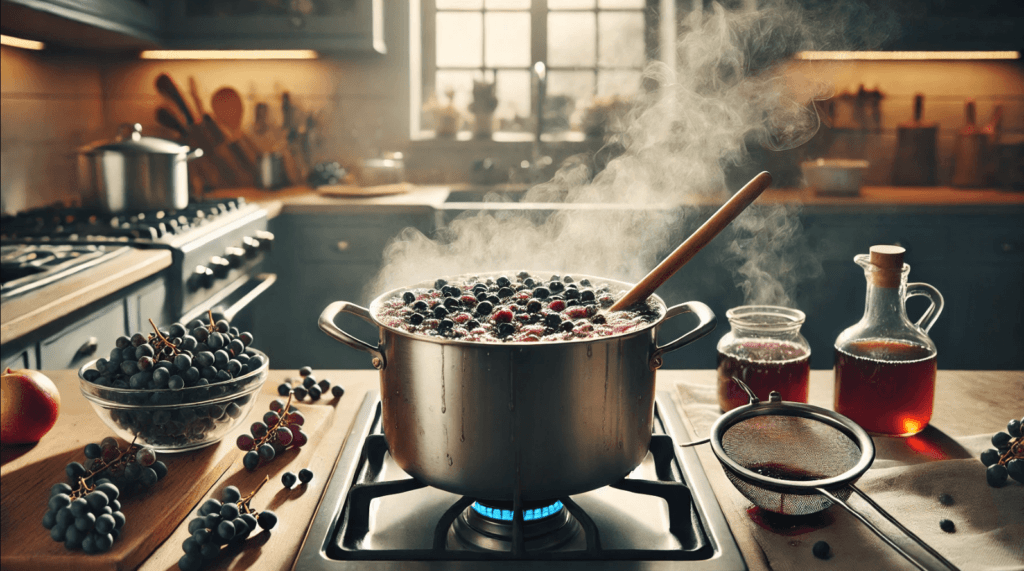
-In a large-sized pot or saucepan, put the crushed grapes and water together. Bring it to a boil and then reduce the heat to a simmer for about 10 to 15 minutes, making sure you stir once in a while.
-Cook the grapes until soft; then remove from the heat and force through a fine sieve, or use a jelly bag, taking out the clear juice from both the skins and the stalks.
3. Adding Pectin and Sugar
-Return the grape juice to the pot and bring it to a boil over medium-high heat.
-Add the Ball pectin while stirring continuously to prevent lumps. Allow the mixture to boil for 1-2 minutes.
-Add sugar gradually, stirring constantly to dissolve. Allow boiling for another 2 minutes; at the same time, skim off the foam from the surface of the liquid.
4. Testing for Gel Point
-The test can be carried out after dropping very small quantities of hot jelly onto a chilled plate. A few seconds of cooling should be given before it is tested whether it has reached the consistency stage.
-Alternatively, you can use a candy thermometer to ensure the jelly reaches 220°F (105°C) for proper setting.
5. Canning Process
-While the jelly is cooking, prepare your canning equipment. Put the jars, lids, and bands in hot water to sterilize them.
-Fill the hot, sterilized jars with the hot jelly, leaving about 1/4 inch of headspace.
-ipe the jar rims with a clean, damp cloth to remove any residue. Place the lids on the jars and screw on the bands until fingertip tight.
6. Water Bath Canning
-Place the filled jars in a water bath canner, ensuring they are submerged in water by at least 1-2 inches.
-Boil the grape jelly jars in the water bath for the appropriate time, as outlined in the Ball recipe for grape jelly, usually ranging from 10 to 15 minutes.
-After processing, remove the jars from the water bath with a jar lifter and set them on a kitchen towel to cool down.
7. Final Steps
Allow the jars to sit undisturbed until cooled, 12 to 24 hours. Test seals by pressing on the center of the lid; it should not flex. Store any sealed jars in a cool, dark place until needed.
If you follow these instructions step by step, using precise amounts and cooking times, you should have every reason to be confident that your batch of grape jelly turns out a success and is delicious.
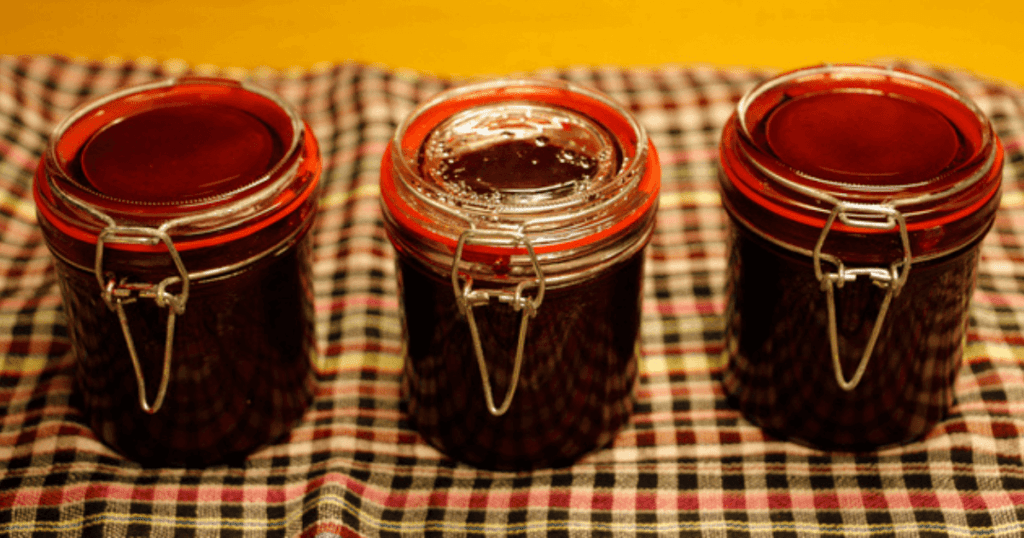
Creative Serving Suggestions for Ball Grape Jelly Recipe
Absolutely! There are numerous creative ways to enjoy homemade grape jelly beyond spreading it on toast. Here are some innovative and delicious suggestions for incorporating grape jelly into a variety of recipes:
1. Gourmet Grilled Cheese with a Twist:
This sandwiches the sweetness of a spoonful of grape jelly right in the classic grilled cheese. The sweetness and tangy taste mix with the savory flavor from the cheese, giving them a double character: not only great but also surprisingly sophisticated choice for a grilled cheese.
2. Glazed Pork or Chicken:
It can even be applied to pork chops, chicken breasts, or meatballs. Natural sugars from the jelly wonderfully caramelize when painted on the meat, giving fruity highlights and a glossy allure.
3. Pastry Fillings:
Experiment with a filling for pastries and desserts by adding grape jelly to it. Bring sweet and tangy grape flavor to homemade Danishes, croissants, or even thumbprint cookies.
4. Grape Jelly Thumbprint Brownies:
Create an irresistible dessert by swirling grape jelly into brownie batter before baking. The combination of rich chocolate and fruity grape jelly adds a delightful complexity to the brownies, enticing the taste buds.
5. Marinades and Salad Dressings:
Use it in marinades for grilled vegetables or as an outstanding addition to your salad dressing. Natural sweetness and acidity provided in the jelly enhance the flavors found in the food, offering a fruity sparkle to dishes.
6. Fruit Parfaits with a Twist:
Layer grape jelly with yogurt, granola, and fresh fruit to make an eccentric and fresh parfait. This shiny grape jelly features a rich and fruity pop of playful color and flavor for a traditional treat.
7. Gourmet Cheese Board Accompaniment:
Serve grape jelly with gourmet cheeses on a charcuterie board. The sweetness of the jelly will mix with the creaminess, tanginess, or nuttiness of the cheese, and add up to the dainty taste.
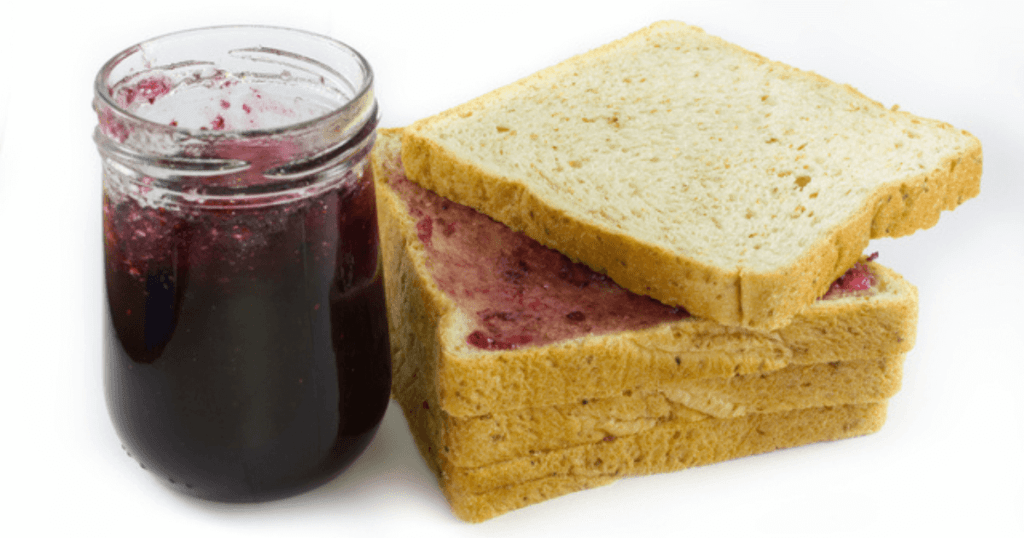
Health Benefits of Grape Jelly Recipes
The grape jelly made at home will definitely have the potential health benefits compared to those bought from stores, due to the artificial additives, and other probable nutrition values. Let me share the goodness.
1. Natural Ingredients:
Most home-prepared grape jelly comes from fresh, whole grapes that enable the product to stay rich in all its natural nutrients and antioxidants. Some of these grape jellies, usually found in stores, have high content of refined sugars, artificial colorings, or even preservatives.
2. Reduced Additives:
Most grape jellies bought from stores are actually over-saturated with high-fructose corn syrup, preservatives, and artificial flavors, all to make sure that taste lasts on the shelf. That is very different from the few natural added ingredients that homemade grape jelly recipes have, thereby providing a fresher product.
3. Nutritional Advantages:
Homemade grape jelly, prepared with a very minimal added amount of sugar, really does wonders in maintaining all the natural health benefits of the grape, which includes great antioxidants, vitamins, and dietary fiber. Therefore, it is plausible to assume that these nutritional benefits are good for health in general, contributing to the natural energy of the body.
4. Control Over Sweeteners:
When making grape jelly at home, controlling or even using your preferred sweeteners in the amount you like is easy. Through this, sugar content can be highly minimized, hence making jelly more suitable for those with health-conscious sugar intake.
5. Minimized Processing:
By preparing homemade grape jelly from scratch, individuals can avoid the extensive processing and heating that store-bought jellies undergo. This minimal processing can help retain the natural nutritional integrity of the ingredients.
6. Nutritional Profile Customization:
Home recipes of grape jelly can be added with a difference in ingredients such as chia seeds to add more fiber content or citrus zest to add more vitamins C and A to the existing rich nutritional profile of jelly.

Frequently Asked Questions (FAQs)
What is grape jelly made of?
I scanned through a whole bunch of conventional grape jelly labels, and the first item was always Concord grape juice—though it was quickly followed by high fructose corn syrup and corn syrup (for sweetness), pectin (which makes it gel), citric acid, and sodium citrate (all of which add tang).
What makes grape jelly purple?
All grapes have juice of the same color, which is whitish or yellowish. It is only the color of the skins that differs. In 1869, Welch’s grape jelly first started with the purple color of the skin of the dark Concord grapes, which has continued.
What grapes are used for jelly?
Generally, grapes used for jelly production have a high natural pectin content, necessary to bring about proper consistency. Some of the common such grapes are the Concord and the muscadines, and its high pectin types. They are justly prized in home use on account of their very rich flavor, and the power of natural thickening, which permits conversion into jelly without the addition of any foreign substance.
Is grape jelly good for you?
True, grape jelly can actually be healthy since it contains pectin and an array of antioxidants that tend to help a little in our digestive process. Versions with very little sugar, like our sugar-free grape jelly, make that tasty snack a power-packed way to load up on sweet, tangy, luscious flavor.
Can I eat jelly every day?
Eating jellies in moderation daily is just a part of a balanced diet. From jelly, we would get a fair amount of sugar; hence, due care needs to be taken to consider the sugar content in jelly, particularly those that are purchased from stores, as they usually have high added sugar content. A moderate portion of homemade jelly with reduced sugar content or natural sweeteners can truly be a pleasant addition to the meal. Remember to balance your total sugar from various sources in your diet and include a wide variety of nutritious foods in your diet for overall health.

Final Thoughts: Ball Grape Jelly Recipe
In conclusion, making Ball grape jelly at home is a profitable, healthy activity that has plenty of perks over the purchased one. Based on the Ball canning recipe and processing with fresh grapes, the result of the grape jelly should not contain any artificial additives, just like it should not have enhanced nutritional value. Encouraging readers to take to the simplicity and joy of preparing homemade grape jelly, the point is brought out through this blog with an emphasis on how grape jelly’s versatility can be used to jazz up grilled meats or recipes of all kinds, from pastries to dessert, with just a dollop of something sweet. This is a path down which readers are encouraged to follow with grape jelly making, enjoy the process, and report back on experiences and flavors in the whole fun and satisfying world of homemade preserves.
You may LOVE to read the following recipes
Ball Grape Jelly Recipe
Course: Jam, Jelly and ChutneyCuisine: American, EuropeanDifficulty: Easy6
servings25
minutes40
minutes60
Ingredients
Fresh Grapes
Granulated Sugar
Ball Pectin
Lemon Juice
Water
Directions
- Prepare the Ingredients:
-After giving the grapes a good wash, cut off the stems. To extract the juices, crush the grapes.
– Measure the required amount of crushed grapes, sugar, Ball pectin, lemon juice, and water according to the recipe. - Cooking the Grape Mixture:
-In a large-sized pot or saucepan, put the crushed grapes and water together. Bring it to a boil and then reduce the heat to a simmer for about 10 to 15 minutes, making sure you stir once in a while.
-Cook the grapes until soft; then remove from the heat and force through a fine sieve, or use a jelly bag, taking out the clear juice from both the skins and the stalks. - Adding Pectin and Sugar:
-Return the grape juice to the pot and bring it to a boil over medium-high heat.
-Add the Ball pectin while stirring continuously to prevent lumps. Allow the mixture to boil for 1-2 minutes.
-Add sugar gradually, stirring constantly to dissolve. Allow boiling for another 2 minutes; at the same time, skim off the foam from the surface of the liquid. - Testing for Gel Point:
-The test can be carried out after dropping very small quantities of hot jelly onto a chilled plate. A few seconds of cooling should be given before it is tested whether it has reached the consistency stage.
-Alternatively, you can use a candy thermometer to ensure the jelly reaches 220°F (105°C) for proper setting. - Canning Process:
-While the jelly is cooking, prepare your canning equipment. Put the jars, lids, and bands in hot water to sterilize them.
-Fill the hot, sterilized jars with the hot jelly, leaving about 1/4 inch of headspace.
-ipe the jar rims with a clean, damp cloth to remove any residue. Place the lids on the jars and screw on the bands until fingertip tight. - Water Bath Canning:
-Place the filled jars in a water bath canner, ensuring they are submerged in water by at least 1-2 inches.
-Boil the grape jelly jars in the water bath for the appropriate time, as outlined in the Ball recipe for grape jelly, usually ranging from 10 to 15 minutes.
-After processing, remove the jars from the water bath with a jar lifter and set them on a kitchen towel to cool down. - Final Steps:
-Allow the jars to sit undisturbed until cooled, 12 to 24 hours. Test seals by pressing on the center of the lid; it should not flex. Store any sealed jars in a cool, dark place until needed.
Notes
- If you follow these instructions step by step, using precise amounts and cooking times, you should have every reason to be confident that your batch of grape jelly turns out a success and is delicious.
 Moanacafe Healthy Kitchen
Moanacafe Healthy Kitchen

